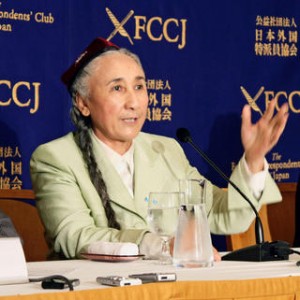Critics accuse China of using Paris attacks to hammer Xinjiang
Nikkei, 8 December 2015
 By Katsuhiko Meshino – A curious message from China’s Ministry of Public Security appeared online on Nov. 14, a day after the Paris terrorist attacks. “All terrorists were killed on the 56th day of a ‘pursue and attack’ operation,” it reportedly said. No further information was offered and the message was removed soon after, but it was enough to pique China watchers’ interest.
By Katsuhiko Meshino – A curious message from China’s Ministry of Public Security appeared online on Nov. 14, a day after the Paris terrorist attacks. “All terrorists were killed on the 56th day of a ‘pursue and attack’ operation,” it reportedly said. No further information was offered and the message was removed soon after, but it was enough to pique China watchers’ interest.
The timing of the announcement of the security operation points to an effort by China to paint its crackdown on Uighurs as part of the worldwide fight against terrorism, but there are many unanswered questions regarding what happened.
Reporting the fight
It is widely assumed the ministry’s announcement referred to the search for suspects in a Sept. 18 attack at a coal mine in Aksu, in the Xinjiang Uighur Autonomous Region, which killed 50 people. Radio Free Asia, a U.S. media outlet, reported the incident within a few days, but the government remained silent — until the Nov. 14 announcement. That was followed by a Radio Free Asia report on Nov. 17 that police blew up a cave in which 17 people were hiding, including the suspected militants, four women and three children. The raid killed everyone, according to the report.
Three days later, on Nov. 20, the Xinjiang Daily, the mouthpiece of the Chinese Communist Party in Xinjiang, published an official statement. It said 16 people were killed in the mine attack, and that the authorities mopped up 28 “terrorists” on Nov. 12, after nearly two months of pursuit. The newspaper made no mention of women and children among the suspects. It claimed the militants were under the control of an overseas extremist group.
Yet another three days later, on Nov. 23, the People’s Liberation Army Daily ran a story about the Nov. 12 raid, saying police flushed the militants from the cave using a flamethrower, and shot them as they came at the police with knives.
Radio Free Asia deserves credit for its timely and accurate coverage. It broke the news about the Sept. 18 incident and reported that the Nov. 12 raid took place in a cave. Both facts were later confirmed by Chinese state media.
But other questions remain unanswered, such as whether the security forces considered the women and children in the group to be terrorists as well, whether they were really taking orders from a foreign extremist group, and whether the cave was blown up or attacked with flamethrower. The background of the original incident is also unknown. These mysteries give international human rights groups and others plenty of reason to demand further clarification.
One man’s terrorist
The party has been busy trying to keep dissenting members quiet over its policies toward ethnic minorities in Xinjiang and its counterterrorism measures. In early November, it fired Zhao Xinwei, former editor-in-chief of the Xinjiang Daily, for publicly expressing “dissenting views” over the party’s ethnic policies. The details are unclear, but the move reveals doubts over the party’s efforts to keep restive minorities in line.

